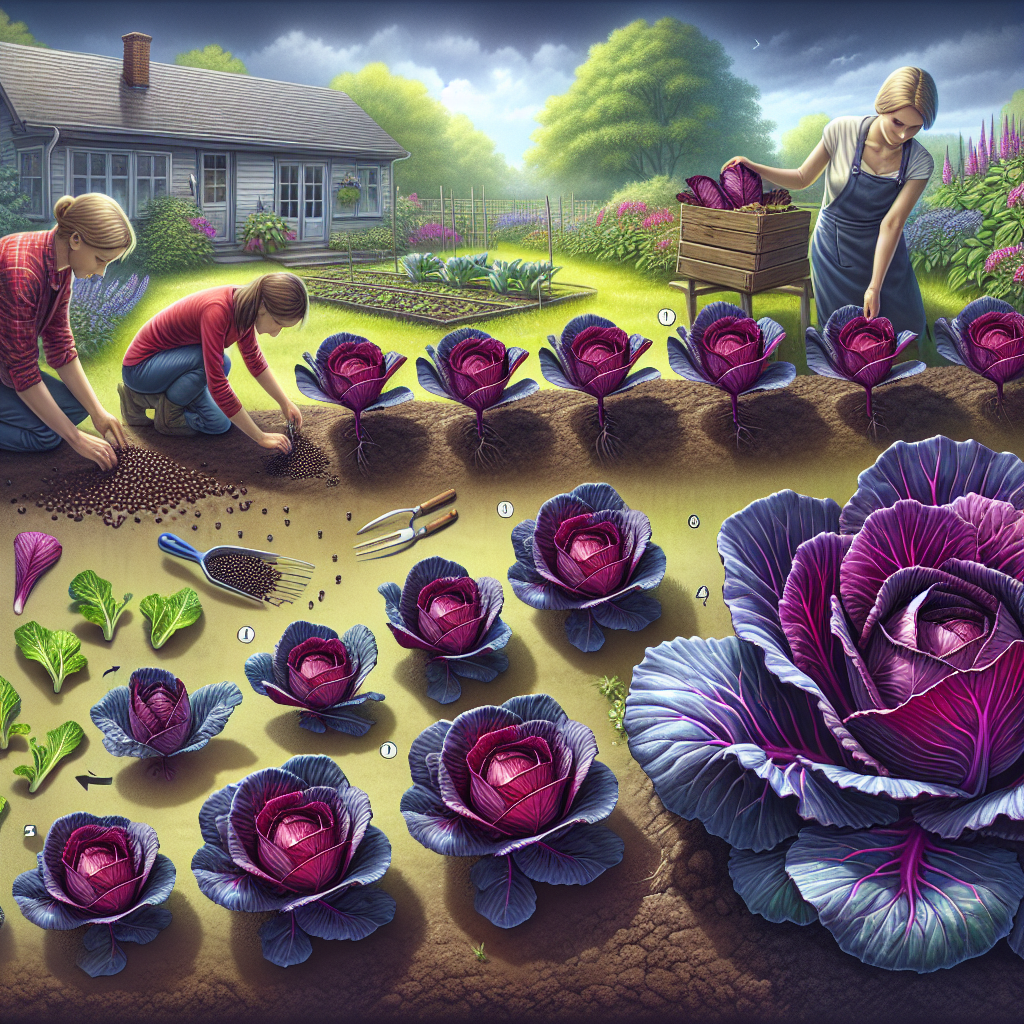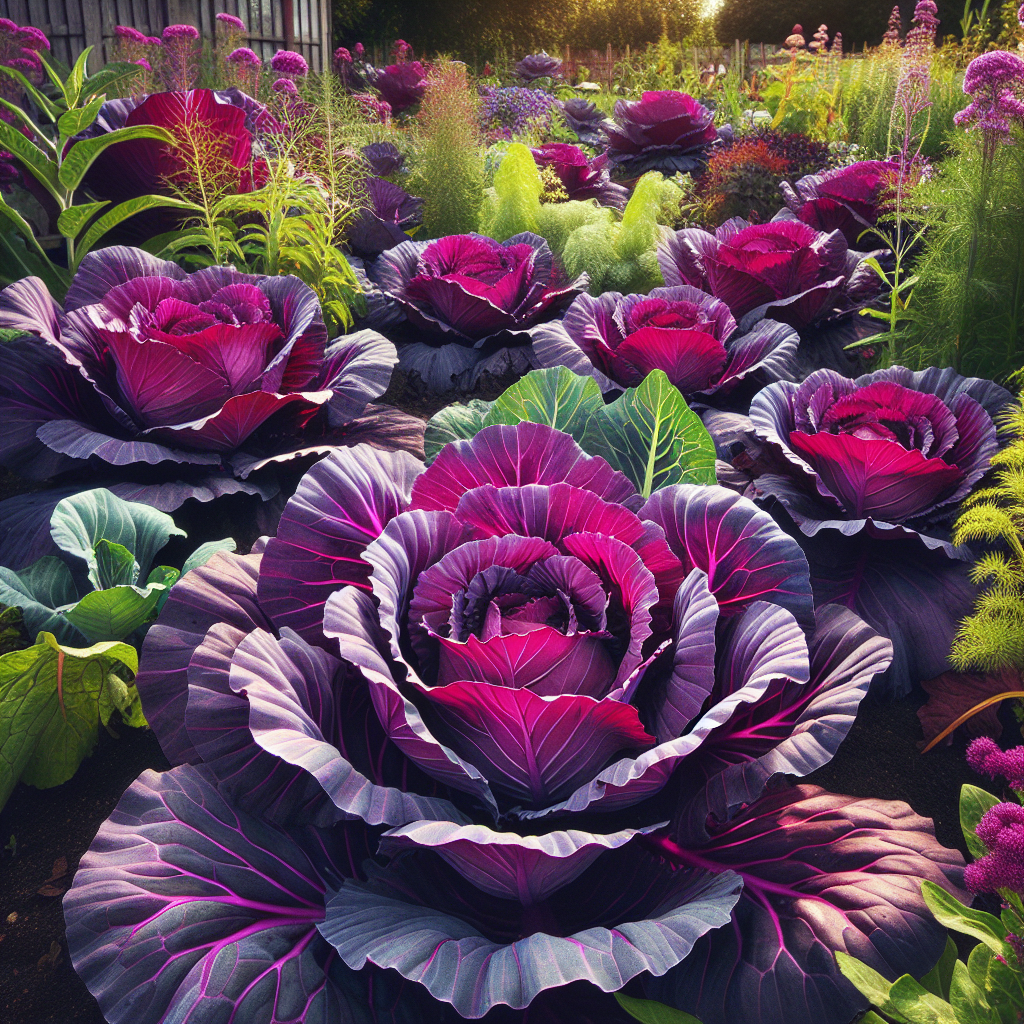Growing Red Cabbage in Your Home Garden
Red cabbage is a versatile and nutritious vegetable that adds color and flavor to any dish. It is a member of the Brassica family, which includes other cabbage varieties, broccoli, and cauliflower. Red cabbage is not only delicious but also packed with vitamins and minerals, making it an excellent addition to your home garden. In this article, we will discuss how to grow red cabbage successfully in your own backyard.
1. Choosing the Right Variety
Before you start growing red cabbage, it is essential to select the right variety for your garden. Some popular red cabbage varieties include Red Express, Ruby Ball, and Red Drumhead. Each variety has its own unique characteristics, so make sure to choose one that suits your climate and personal preferences.
2. Preparing the Soil
Red cabbage thrives in well-drained soil that is rich in organic matter. Start by preparing your soil a few weeks before planting by removing any weeds or debris. Add compost or aged manure to improve soil fertility and texture. It is also recommended to conduct a soil test to ensure proper pH levels for optimal growth (around 6.5 to 7).
3. Starting Seeds Indoors
Start your red cabbage seeds indoors about 6-8 weeks before the last expected frost date in your area. Fill seed trays with seed starting mix and sow the seeds about half an inch deep in each cell or pot. Keep the soil moist but not waterlogged throughout the germination period.
4. Transplanting Seedlings
Once your red cabbage seedlings have grown their second set of true leaves, they are ready to be transplanted into your garden bed or container. Choose a location that receives at least six hours of direct sunlight daily, as this will promote healthy growth and vibrant colors.
5. Spacing and Planting
Red cabbages require adequate spacing for good airflow between plants to prevent diseases. Space seedlings approximately 12-18 inches apart in rows set at least 12-24 inches apart. Dig a hole slightly larger than the root ball of each seedling, gently place the plants in the hole, and cover with soil. Ensure that the crown of the plant is level with or slightly above the soil surface.

6. Watering and Mulching
Cabbage plants need consistent moisture to develop healthy heads. Water regularly, providing about an inch of water per week through rainfall or irrigation. Avoid overhead watering, as wet leaves can lead to disease problems. Consider mulching around the plants to retain soil moisture and suppress weed growth.
7. Fertilizing
To promote robust growth and encourage head formation, fertilize your red cabbage plants about three weeks after transplanting. Apply a balanced fertilizer or compost around each plant, following package instructions for appropriate dosage and frequency.
8. Pest and Disease Management
Red cabbage can be susceptible to pests like cabbage loopers, aphids, and cabbage worms. Regularly check your plants for any signs of infestation and take appropriate action such as hand-picking insects or using organic pest control methods if necessary.
Diseases like clubroot and powdery mildew can also affect red cabbage plants. Rotate your crops annually to prevent diseases from building up in the soil, and promptly remove any infected leaves or plants to prevent further spread.
9. Harvesting
Red cabbages generally take around 80-100 days from transplanting to mature fully depending on the variety chosen. Check for maturity by lightly squeezing the head; it should feel firm with densely packed leaves. Use a sharp knife to cut through the stem just below the head when harvesting.
10. Storing Red Cabbage
After harvesting, remove any damaged outer leaves and store red cabbage heads in a cool, dark place like a root cellar or refrigerator crisper drawer for maximum freshness. They can last for several weeks under proper storage conditions.
In conclusion, growing red cabbage in your home garden can be a rewarding and enjoyable experience. By following these simple guidelines, you can produce your own vibrant and nutritious red cabbage to enjoy in various culinary creations. Whether you have a large backyard or a small balcony, give red cabbage a try and reap the numerous benefits it brings to your plate and health.













